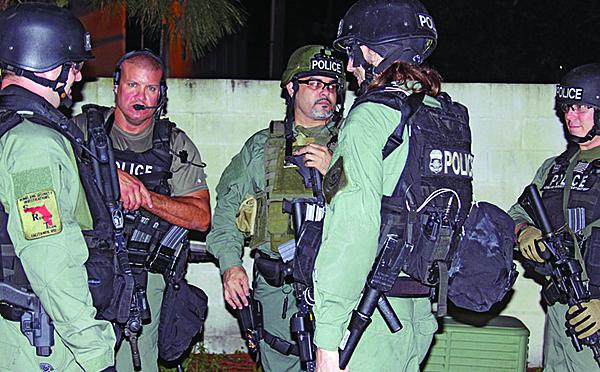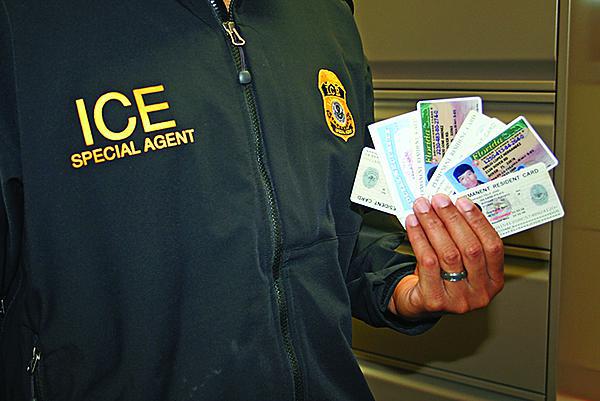National Security Advances in an Increasingly Connected World
Homeland security officials are battling privacy and technology issues amid the new social media era that offers both challenges and opportunities. Just as new technologies and information sharing architectures have improved interagency data sharing, new sources of potentially valuable information have emerged to vex planners who must handle technical obstacles and personal rights.
Protecting the United States from terrorism is a multilayered approach with much of the good work accomplished before anyone outside of law enforcement can hear about it. Efforts made in only the last few years have linked those sometimes-unnoticed personnel in unprecedented ways, allowing them to make more connections and therefore stop more problems before they start. Privacy issues remain at the forefront of complications, as officials try to balance people’s rights with the demands of security.
The U.S. Customs and Immigration Enforcement’s (ICE’s) Homeland Security Investigations (HSI) directorate is one of the law enforcement agencies involved in the myriad joint efforts across the country and the world to stamp out terrorists and other criminals. During a recent six-month period, its National Security Investigations Division placed about 280 people on a watch list to make sure they fail to gain admittance to the United States. “A lot of preventative work is done up front ... to identify those potential threats,” says John P. Woods, assistant director, HSI’s National Security Investigations Division. The job of members of the team is to examine vulnerabilities open to exploitation and ensure that individuals with attributes of or potential to be a terrorist or militia member stay in compliance or leave.
Interagency sharing necessary to carry out actions vital to homeland security long has been a source of consternation to those responsible for them. Technology “has been the biggest challenge,” Woods explains. “People say after 9/11 the systems didn’t talk to each other. Well, that was 2001, and I can tell you in 2009 many systems still didn’t talk to each other.” However, proper appropriations and other funds have come together to allow for technology connecting systems such as the Student and Exchange Visitor Information System (SEVIS), the Arrival and Departure Information System and other case management and targeting systems.
The program now can transfer information through an automated process for proper vetting, and only as recently as 2013 the HSI began doing 100 percent automated vetting in several of its programs. Until now, and still in certain locations, the HSI and Customs and Border Protection had to run batch disks to each other to share and vet data properly. “This has been a long time in the making to get a lot of these processes up and running,” Woods says. Still on the wish list are more technologies that help identify people. Woods says some of these types of capabilities exist and are in use—such as mega public warehouses of data—but if industry is curious about what to pitch, systems in this area are of strong interest. All the actions carried out through the technologies are contingent on privacy, as well as what data is available.
Woods believes law enforcement agencies also must employ social media better, especially overseas. “We need to exploit it worldwide,” he says. For example, if officers are searching for an individual within the United States, only to find out through Facebook that the person is back in Bulgaria, they can close the case. Improving global communication is important overall, so agents can forward derogatory information about individuals to authorities in the proper geographic locations.
Finding a small number of individuals via social media is not a problem; analysts do that now. But to cull through hundreds of thousands of identities requires different reach. Woods says the HSI lacks that view into the social media world that allows it to identify high numbers of people, and lots of companies have information on how to do that. He expects his organization to put out a request for proposal soon to learn more about the resources available.
Data management is another important technology field for the HSI. Woods says when he considers counterproliferation, the volume of cargo is so immense that checking it all is impossible given current resources. However, if a system stored all the files electronically, and algorithms could target key pieces of data, anomalies would show up more easily. He explains that, currently, gathering all the necessary data together is difficult, requiring searches among multiple databases and compliance with privacy processes. “I think we’re moving in the right direction, doing the right things,” Woods says. “The government is always a little more behind the curve than the private sector.” He tries to be open if developers want to approach him with solutions, but he emphasizes he has to work with what his agency can afford.
The National Security Investigations Division is active in customs enforcement, including the laws that govern the export of technical goods and knowledge. “We are the strongest nation in the world because we have the best technology,” Woods says. “One way to stay that way is to make sure that technology doesn’t fall into the hands of our enemies.” If personnel here develop a capability, the United States wants to ensure the country keeps that benefit for its advantage.
Technologies new to the HSI could help with homeland security in various ways, including the Student and Exchange Visitor Program (SEVP). Within the National Security Investigations Division falls the Counterterrorism and Criminal Exploitation Unit (CTCEU), which holds responsibility for the program. The SEVP and Department of State use SEVIS to monitor various facets of the U.S. education system. Student visas are unique in the visa program because they can last indefinitely as long as the holder maintains student status. The HSI performs constant vetting of the more than 1 million foreign students, and in some instances their accompanying family members, in case new derogatory information surfaces. Officials can take what they learn to determine whether to initiate a case and potentially have a person removed from the country.
The CTCEU is the first national program dedicated to the enforcement of nonimmigrant visa violators. The unit analyzes between 15,000 and 20,000 records each month. Members try to make investigations person-centric, determining the greatest threats; they identify potentially dangerous individuals and target them for removal. Officials have hundreds of thousands of leads they whittle down through targeting mechanisms to a few thousand potential national security threats. They then use finite resources to investigate those suspects. The SEVP also examines the schools themselves, ensuring no weaknesses there are exploited. Woods shares that some people try to take advantage of the system by offering to keep people on the books as students in exchange for money.
Ensuring that valid, responsible persons study in the United States is important for law enforcement, the U.S. educational institutions and the country overall. The foreigners add around $20 billion to the economy annually and tend to pay full tuition rates.
Along with the CTCEU, National Security Investigations covers a range of units in three major programs. These groups work together and with their partners to track the persons, goods and information that could harm U.S. interests. Individuals are monitored from the time they apply to visit until they leave the country. “I think it’s important because it’s that layered security approach to ensure those that want to come to the United States are vetted and properly looked at, and we ensure they are people that are worthy to get visas to come [here],” Woods says. The layers continue with the continual checks done while the visitors stay in the United States, making sure they follow laws and depart on time. “I’m not going to say we go look for every alien who overstays a visa, but if any issues raise a national security eyebrow, we’ll go out and look for that individual,” he adds.
The HSI uses intelligence-based criteria to ensure that potential violators who pose the greatest threats to national security receive top priority. The organization chairs the Compliance Enforcement Advisory Panel, made up of subject-matter experts from law enforcement agencies and members of the intelligence community who assist the CTCEU maintain targeting methods in line with the most current threat information.
Officers continue to take fresh looks during visitors’ tenures in case new developments come to light after the original vetting process. “It should be emphasized, it’s not one thing that protects us,” Woods explains.






Comments